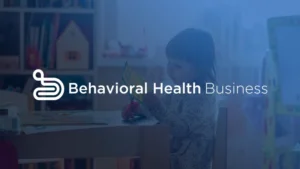The 2022-23 school year: increased challenges within the school setting. Historically, ABA therapists tasked with providing both in-home and at-school therapy to clients have encountered complications while functioning in tandem with educators, school service providers, and support staff. However, this school year, challenges are certain to intensify for a number of reasons. Examples include:
-
The global staffing shortage.
Coined "The Great Resignation," the movement has impacted just about every industry -- with education being one of the fields hit hardest.
-
The continuing impact of COVID-19.
While it's hard to find an industry that did not struggle due to pandemic-related hardships, many uncovered ways to navigate the circumstances to operate successfully. Education, on the other hand, continues to experience aftershocks.
-
Escalating burnout rates.
Post-COVID, educators were propelled from in-person to remote instruction, followed by unpredictable transitions between the 2 due to things like COVID outbreaks at school and ever-changing state, federal, and CDC directives. Today, issues are compounded by heightened vacancies, with the staff being tasked with additional responsibilities – and widespread burnout is a major outcome.
What this means for ABA therapists
This year, providers who enter schools to work with learners – many of which are experiencing burnout of their own – will encounter 2 options. The first: maintaining the status quo, replicating what has been done in years past. The second: recognizing the stress schools are facing this school year, the implications on learners, and taking a proactive approach in working with educators and their teams during a year that is likely to pose difficulties for ABA therapists, school staff, parents, and clients alike.
This blog is for those that choose to take the second route. It provides recommendations, strategies, and tips developed to help ABA practitioners make adjustments that promote open communication, reduce friction seen in years past, and ultimately, place the learner first.
5 methods behavioral health providers can use to facilitate effective communication in schools
Focusing on switching gears from the therapy setting or clinic you are accustomed to while delivering services to learners in school will impact educators, staff, and learner progress and outcomes. Straightforward and easy to implement, the following tactics were designed to promote improved collaboration and communication, diminish stress, and support learner advancement during what is expected to be a stressful year.
-
Think of the classroom as a home.
Upon entry, you are the guest. When you enter someone’s home, there are already established rules, routines, and practices that guests recognize and respect. The same goes for the classroom.
-
Foster connection.
It is important to build rapport with the teacher, staff, administration, and any professionals within the school that deliver services to your client. Effectively working as a team is difficult, if not impossible, if there is friction among its members.
-
Be mindful of perception.
Enter classrooms in a way that allows you to be viewed as an asset, not a threat. For educators, having an outsider in their classroom can feel intimidating. They may feel “watched” or judged. Every teacher is different, so there is no one-size-fits-all approach. So, on a case-by-case basis, communicate with each educator to find out how best to work with them (and cause the least amount of interference and distraction).
-
Leverage classroom time to help your learner.
The classroom is a great place to see generalization in action. Remember that there will be a disparity in what clients can do in a classroom setting versus 1:1 – and that it’s OK! View it positively: it allows you to take data on areas that need more work during your in-home therapy sessions.
-
Be mindful of word use.
Language can create barriers. Some ABA terminology, words, and phrases are appropriate among other professionals in your field, but in schools, come across as pretentious or intimidating. Refrain from using terms unfamiliar to educators, and opt to communicate using language that is easy to understand for all parties.
The final step: preparing parents and learners
The recommendations in this blog offer a great way to kickstart improved communication and collaboration between practitioners and schools. However, it should not end there. While practitioner actions play a significant role in setting the stage for a better school year, two other components -- 1) parental involvement, and 2) equipping learners with skills needed to navigate the year -- are vital to school success.
Our comprehensive guide provides actionable strategies practitioners can use to:
- Take action themselves in helping facilitate an effective and collaborative partnership with their learners' schools
- Provide (and empower!) parents with strategies to successfully communicate with overwhelmed teachers and ensure their child's needs are met
- Equip learners with the tools needed to prepare for this year's stressful circumstances, work on specific strategies to cope with potential ramifications of an understaffed school, learn coping strategies, and more.






